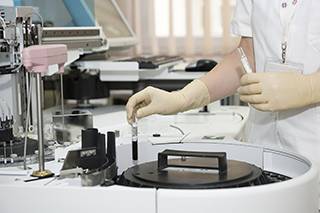The manufacturing team triple-checks the specs and declares the medical equipment ready to ship. Gleaming, spotless, and painstakingly calibrated, this machine is destined for a hospital operating room, where it will act as the beating heart for a patient undergoing cardiac bypass surgery.
But first, it has to travel hundreds or thousands of miles from the factory to the hospital.
Shipping high-value equipment always requires extra care. But when lives are depending on the safe arrival of your product, custom medical device and equipment packaging that guarantees a successful shipment should be a top priority.
First, Do No Harm
Medical equipment can be complex, delicate, and expensive. So it pays to protect it from moisture, shock, and vibration during transit. Protecting against these three dangers is the best preventative medicine.
The three basic rules for a successful shipment are so important that we have a blog post dedicated to each one:
1. Keep it dry.
2. Avoid shock.
3. Mitigate vibration.
Unique Diagnoses
Depending on the precise nature of the medical equipment being shipped, the package might require more specialized care:
Cleanroom Compatible
Equipment assembled in a cleanroom will most likely need to be shipped according to cleanroom protocols. Look for special packaging designed to prevent contamination, such as cleanroom foams for cushioning and cleanroom foil bags to block out particulates. And verify that the packaging team is trained in the appropriate techniques to keep your equipment spotless during shipment.
FDA Approval
Like a patient in intensive care, some medical equipment requires the most rigorous attention as it is prepared for shipment. For example, some machinery can only be packaged using supplies and techniques that have been approved by the U. S. Food and Drug Administration (FDA). Following these protocols helps ensure that the equipment does not become contaminated while en route to the medical facility by anything that could later pose a danger to patients.
Additional Symptoms & Treatments
Assess the medical equipment you plan to ship to determine if it suffers from any of these other common conditions.
Abnormal Length or Height: Share the full dimensions of your equipment with your medical equipment packaging company before you begin building. Otherwise, you may discover after the fact that your equipment is too tall to fit inside a standard ocean container or tractor trailer. Last-minute workarounds, such as sending your precious cargo across the ocean in an open-top container or having to disassemble it prior to crating, will cost more, take longer, and/or cause you to accept additional risk. All of which could have been prevented with a more complete understanding of shipping requirements.
Multiple Parts: You might be inclined to build a custom crate for your most expensive equipment, but send other elements via standard shipping services, like FedEx or UPS. But it’s worth considering whether that will end up costing you more in the long run. It might make business sense to design a consolidation crate that can house your primary piece of equipment, plus all the other items needed to successfully install it at your customer’s facility. Packaging everything together in a single crate guarantees that it all receives the same careful handling and arrives at the customer’s site at the same time.
Excessive Weight: The total weight of the equipment can impact several different aspects of packaging. Larger machines weighing more than 1,000 pounds may require specially reinforced heavy-duty skids. But lighter-weight devices might be built on wheels. So a crate for equipment weighing less than 1,000 pounds might include a ramp to allow the unpacking team to roll the equipment out of the crate.
Compromised Balance: Top-heavy equipment can pose a real danger during shipment—to both the machine and the people tasked with moving it. Medical equipment with a high center of gravity requires a crate built around a much wider skid, with custom bracing at the top to help ensure the equipment stays upright through the whole journey.
Protecting Lives with Expert Packaging
When lives are depending on the safe transport of your equipment, trust CDC Packaging to make sure it arrives in prime condition at your customer’s site. Contact us today to learn more about customizing your packaging to meet the special needs of shipping medical equipment.

